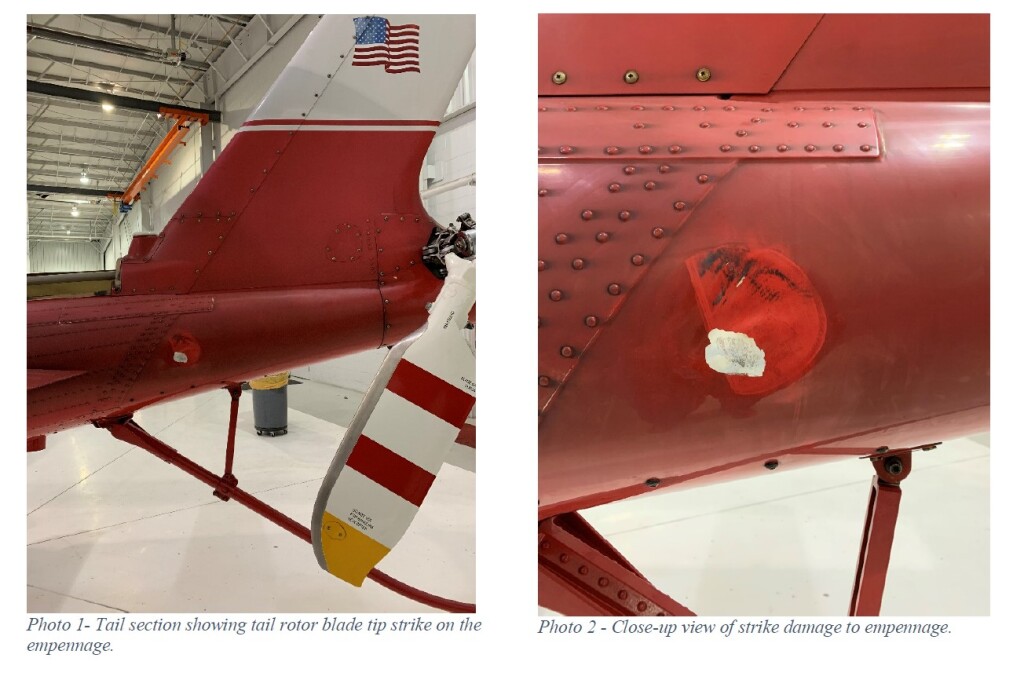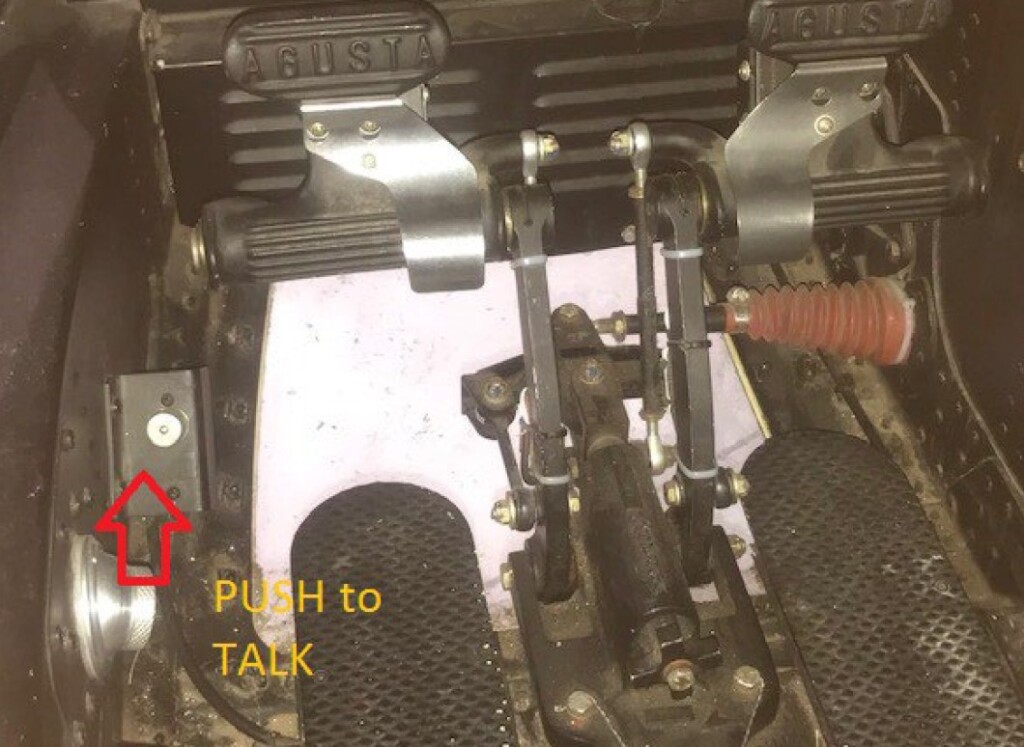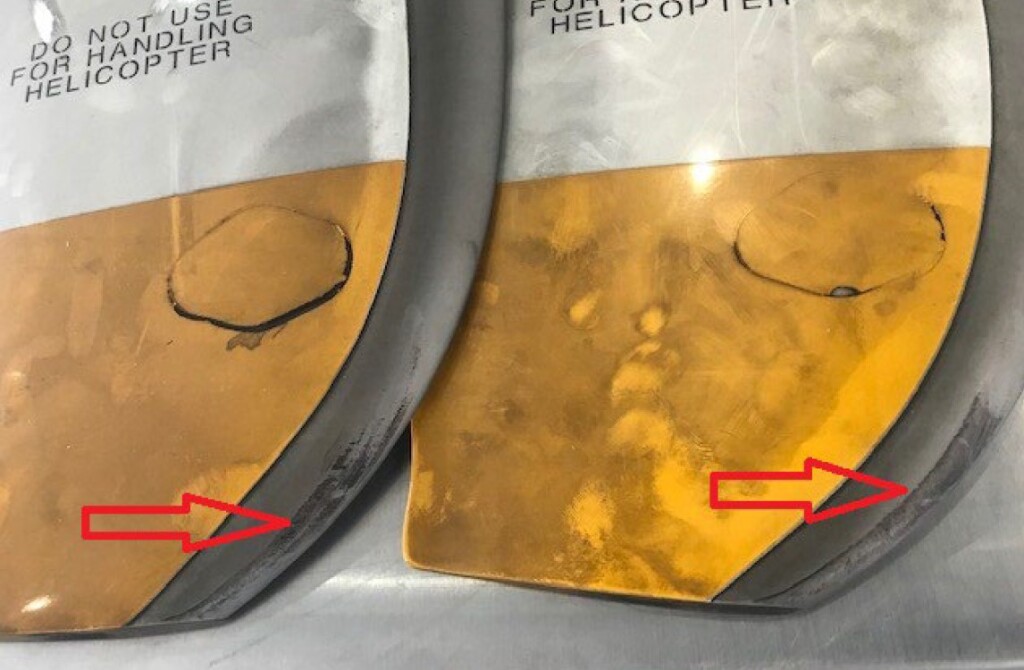Inadvertent PTT Pedal Input Causes Tail Rotor Tailboom Contact (Intermountain Healthcare AW109S N271HC)
On 12 November 2019, at c20:08 Local Time, Leonardo AW109SP Grand helicopter air ambulance N271HC of IHC Health Services, was substantially damaged in an nightime event during cruise near Spanish Fork, Utah. The pilot and two flight nurses onboard were uninjured.
History of the Flight
The US National Transportation Safety Board (NTSB) note in their safety investigation report, issued on 3 June 2022, that it was usual for one of the flight nurses to be in the front left seat during flights without a patient aboard. The flight nurse had been in that role for 11 years, 5 with IHC, but “normally rode in the rear cabin of the helicopter”.
About 16 minutes into the flight and 5 minutes from their destination (the scene of a motor vehicle accident on Highway 6)…
…the flight nurse, seated in the left front seat, attempted to contact personnel on the ground to coordinate their landing. Rather than step on the push-to-talk (PTT) button located on the cabin floor to activate the radio microphone, he inadvertently stepped on the left anti-torque pedal, which resulted in a rapid yaw to the left.
The pilot described this yaw as “severe and violent”. The flight nurse said it “felt like they got hit with strong turbulence over a mountain”. No abnormal noise or vibration was detected.
The pilot re-established straight and level flight and landed the helicopter uneventfully.
The pilot was 72 years old and had 11173 hours of flying experience, 985 on type.
The pilot did not observe any unusual signatures on the exterior of the helicopter during a walkaround inspection after they landed…however, he did not inspect the tail rotor blades or tailboom. The rest of the flight was uneventful, and the pilot did not report any anomalies with the tail rotor blades or tailboom during the subsequent flights that took place during his shift.
Next day the oncoming pilot…
…conducted a walkaround inspection in daylight conditions and discovered damage to the tailboom as he approached the helicopter. The helicopter was immediately taken out of service and ferried to the company’s maintenance facility for repair.
NTSB Safety Investigation
The damage to the blades and empennage was consistent with their making contact, and the flight data suggest this occurred during the first leg of the shift flight as the crew did not experience any other events that would have caused the degree of damage observed.
Damaged Tail Rotor Blades from Intermountain Healthcare Leonardo AW109S Grand N271HC (Credit: via NTSB)
When the flight nurse stepped on the left pedal, the pitch of the tail rotor blades would have increased, increasing tail rotor thrust, and yawing the aircraft counter-clockwise.
The helicopter was equipped with an Appareo flight data monitoring (FDM) system, which indicated that the yaw was about 11°.
An NTSB performance study using data retrieved from the FDM corroborated the pilot’s statement and showed that the helicopter rapidly turned left from a heading of 153° to 142° in 1.25 seconds. When the pilot countered the movement with right tail rotor pedal, the helicopter returned to 151° in 2 seconds. During this time, the helicopter rapidly rolled from level flight to -15° to 15° and pitched up 2° before returning to its original altitude.
When the pilot countered with right pedal, the tail boom would have swung back towards the rapidly unloaded the tail rotor. It is likely that this is when the tail rotor blades impacted the tail boom.
Further:
The helicopter manufacturer provided flight handling qualities data obtained during certification…. A dynamic stability test point was performed in level flight at 0.9Vh ± 10° yaw where Vh is the calculated maximum horizontal airspeed based on atmospheric conditions. This test involved a 15% pedal input over 0.5 second, which resulted in a 6º-to-15º per second sideslip deviation.
A simulation was performed using the accident helicopter’s parametric data and ambient conditions showed that to match the yaw rate and magnitude, a 40% left pedal input (90% pedal position) was required. This resulted in a 20° per second deviation, which exceeded the parameters tested for during certification.
One flight nurse commented to the NTSB that they…
….had never personally pushed the pedal by accident when attempting to use depress the push-to-talk switch, but heard that it happens occasionally. Before the accident flight he would actively think about his foot position to ensure his foot did not inadvertently contact the pedals during night flights only.
Operator’s Safety Actions / Recommendations
While the NTSB made no safety recommendations, the operator stated in the accident report form:
- They had removed ‘active pedals’ from the left front seat of all their aircraft (done to their credit within one day)
- They wold install ‘pedal lock-outs’ in future
- They and prohibited non-pilots from occupying any left front seat with ‘active’ dual controls
NTSB Probable Cause
The flight nurse’s inadvertent application of left anti-torque pedal during cruise flight, which resulted in a rapid yaw and pitch movement that caused the tail rotor blades to contact the tailboom.
Safety Resources
The European Safety Promotion Network Rotorcraft (ESPN-R) has a helicopter safety discussion group on LinkedIn. You may also find these Aerossurance articles of interest:
- Loose Clothing Downs Marijuana Survey Helicopter
- HEMS A109S Night Loss of Control Inflight
- Air Ambulance A109S Spatial Disorientation in Night IMC
- A Short Flight to Disaster: A109 Mountain CFIT in Marginal Weather
- Air Methods AS350B3 Night CFIT in Snow
- A HEMS Helicopter Had a Lucky Escape During a NVIS Approach to its Home Base
- Air Ambulance Helicopter Struck Ground During Go-Around after NVIS Inadvertent IMC Entry
- Erratic Flight in Marginal Visibility over New York Ends in Tragedy
- Black Hawk Scud Running in Tennessee: IIMC & CFIT
- CFIT Gangnam Style – Korean S-76C++ and Decision Making
- NTSB Investigation into AW139 Bahamas Night Take Off Accident
- Fatal Night-time UK AW139 Accident Highlights Business Aviation Safety Lessons
- HEMS AW109S Collided With Radio Mast During Night Flight
- Fatal B206L3 Cell Phone Discount Distracted CFIT
- US Air Ambulance Helicopter Hospital Heliport Tail Strike
- Air Ambulance B407 Hospital Helipad Deck Edge Tail Strike During Shallow Approach
- Air Methods AS350B3 Air Ambulance Tucson Tail Strike
- NTSB on LA A109S Rooftop Hospital Helipad Landing Accident
- Air Ambulance Leaps into Air: Misrigged Flying Controls
- Air Ambulance Helicopter Fell From Kathmandu Hospital Helipad (Video)
- US Air Ambulance Near Miss with Zip Wire and High ROD Impact at High Density Altitude
- Hanging on the Telephone… HEMS Wirestrike
- Air Ambulance Helicopter Downed by Fencing FOD
- Ambulance / Air Ambulance Collision
- Beware Last Minute Changes in Plan
- Grand Canyon Air Tour Tragic Tailwind Landing Accident
- Pedestrian Seriously Injured by Air Ambulance Landing at Melbourne Hospital
- RLC B407 Reverses into Sister Ship at GOM Heliport
- Wire Strike on Unfamiliar Approach Direction to a Familiar Site
- Tool Bag Takes Out Tail Rotor: Fatal AS350B2 Accident, Tweed, ON
- When Habits Kill – Canadian MD500 Accident
- EC120 Forgotten Walkaround
- UPDATE 18 June 2022: Limitations of See and Avoid: Four Die in HEMS Helicopter / PA-28 Mid Air Collision
- UPDATE 25 June 2022: NYPD B429 Accident at Manhattan Heliport “Overapplication of Flight Controls”





Recent Comments